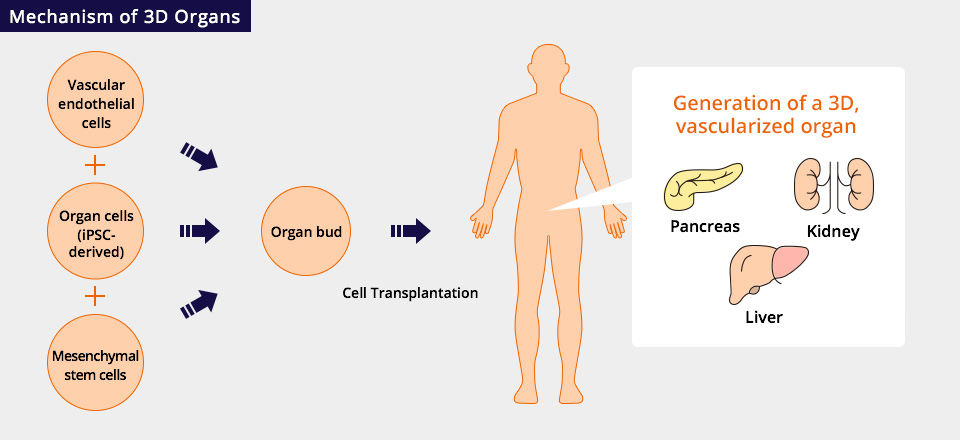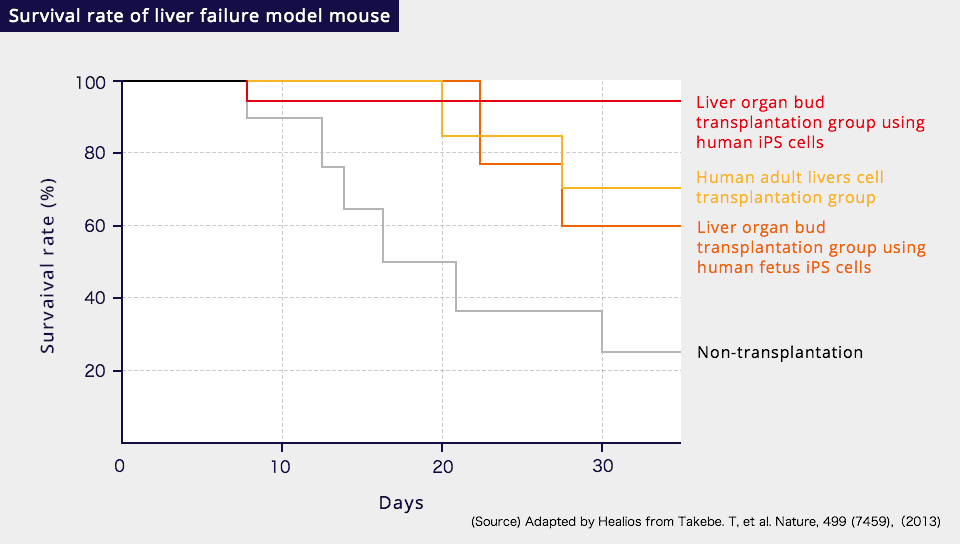About Liver Disease
The liver has three primary functions. The first function is the synthesis and storage of substances needed by the body from the nutrients absorbed from food (metabolism). The second function is the neutralization and decomposition of harmful substances such as alcohol (detoxification). The third function is the synthesis and secretion of bile (synthesis), which is needed for the digestion of food. If the liver becomes impaired for any reason, the subsequent inability to metabolize, detoxify, or synthesize various substances can have a major impact on the sufferer’s life.
Among the conditions known as liver diseases are urea cycle defects, which appear shortly after birth, and cirrhosis.
A urea cycle defect is a genetic disorder caused by a deficiency of enzymes in the urea cycle, a process that converts harmful ammonia in the body into urea. In such cases, the body is unable to detoxify ammonia, causing hyperammonemia, a condition marked by an increased level of ammonia in the blood which leads to damage of the central nervous system. This is a serious illness that, when it occurs shortly after birth and is not appropriately treated, can cause death or long-term effects such as neurological developmental disorders.
Cirrhosis is a condition in which the liver suffers damage due to causes such as viral infection or fatty liver disease. In order to repair the damage, the liver accumulates collagen, which proliferates throughout the liver, in a process known as fibrosis. The liver shrinks and hardens, ceasing to work normally, and its functions are lost.
Number of Patients
Each year, it is estimated that approximately 30 people in Japan and about 390 people in Europe and the US are diagnosed with urea cycle defects.
| US | Japan | Europe | Total | |
| Number of patients (yearly) | Approx. 160 | Approx. 30 | Approx. 230 | Approx. 420 |
- * Number of patients is estimated by Healios based on number of newborns and incidence rate.
By contrast, there are between four and five hundred thousand patients with cirrhosis in Japan, and among them, it is estimated that about 56,000 people are diagnosed with cirrhosis by medical institutions. It is also believed that about 17,000 people each year die due to cirrhosis.
- * Patient Survey 2011, Liver Cancer White Paper 2015
Current Treatments
In urea cycle defects, even the mildest cases require treatment, aiming to reduce ammonia levels in the blood through diet or pharmaceutical intervention, which must continue throughout the patient’s life. For cirrhosis, the advance of the illness may be delayed through dietary restrictions or pharmaceutical intervention and treatments are administered to alleviate symptoms. For serious cases of urea cycle defects or cirrhosis, the only treatment for the underlying illness is a liver transplant. Although the need for liver transplants increases each year, the supply of donor organs is conclusively inadequate, and several issues are present.
| US | Japan | Europe | Total | |
| Number of patients undergoing treatment (Annual) | Approx. 6,000 | Approx. 400 | Approx. 4,000 | Approx. 10,000 |
| Number of patients on waiting list (Annual) | Approx. 15,000 | Approx. 400 | Approx. 4,000 | Approx. 20,000 |
- * Compiled by Healios based on materials disclosed by Japanese Liver Transplantation Society, UNOS, Eurotransplan, UK Transplant, Agence de la biomédecine, and Scandia Transplant.
The Treatment Healios Is Pursuing: 3D Organs
Starting in 2014, we launched research on the production of functional human 3D organs in collaboration with Yokohama City University and are engaged in the development of regenerative medicine with the goal of improving the function of the liver.
We focus on a technique to generate a rudimentary three-dimensional vascularized organ, or “organ bud,” by co-culturing iPSC-derived organ progenitor cells, which can differentiate into hepatocytes and renal cells; mesenchymal stem cells, which have the ability to develop into various types of connective-tissues; and vascular endothelial cells, which form the blood vessels.

It is believed that by implanting a liver bud created in this manner into a patient, its development will restore liver function in patients affected by liver disease. Experiments in which liver buds were implanted into liver failure model mice demonstrated that the organs formed from the liver buds autonomously joined with the vascular systems of the mice. Additionally, it was found that mice transplanted with the liver bud using human iPS cells had significantly improved survival rates compared to mice not receiving transplants.

We are further considering the possibility of alternatives to the transplantation of 3D organs and are investigating mass production techniques as well as assessing transplantation methods for human transplantable liver buds.
